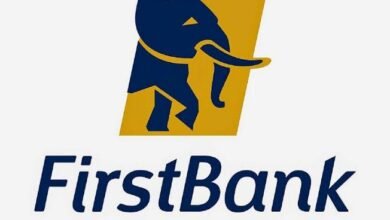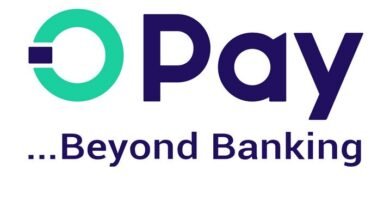How To Check COVID-19 Loan Approval (Step-by-step Guide)
How To Check COVID-19 Loan Approval: In 2020 there was an outbreak of a virus called COVID-19, it originated from China specifically a Laboratory test mishap. The pandemic has caused a major hardship to millions of people across numerous countries in the world.
Many can’t afford basic amenities of life hence reducing the standard of living in various countries – this has prompted various governments to partner with various financial institutions in their countries to introduce loan programs specifically designed to support individuals and small sized businesses (SMEs) affected greatly by the pandemic.
In this article, I will be explaining to you the processes you must follow when applying for a COVID-19 loan and factors that may influence either the acceptance or denial of your loan.
How To Check COVID-19 Loan Approval
Here are the steps to follow when trying to get a COVID-19 loan approval:
- Check your loan application status;
- Understanding of the approval process;
- Review your Credit Report;
- Check that the information you filed for the Loan approval is complete;
- Consider other alternative loan options.
1. Check your loan application status:
After applying for a COVID-19 loan either digitally or physically – it is important to keep track of your loan status by reaching out to the lender or financial institution that you applied through. Here are 2 procedures you can use to track your COVID-19 loan application status:
- i) Online Application: For those that applied online it is easier as they are to email notification from the financial institution which tells them if their loan has been approved or denied.
- ii) Physical Application: For those that applied physically it is more strenuous as you have to contact your lender or financial institution to determine if your loan request has been approved or rejected.
Both procedures have one common feature as you have to possess the number of your loan application to process your loan application faster. Most financial institutions also provide a feature to their users in which they can check the status of loan application through the online portal.
2. Understanding of the approval process:
Various people have raised objections and questions which are bordering on if the COVID-19 loan approval process is similar to other types of loans. Well, to calm the questions the approval process for a COVID-19 loan is similar to other types of loans but the lender will have to consider some vital factors such as your Credit score, Income, Employment history, and debt history before approving or denying your loan application.
There have been various instances when people just apply for the loan just for greed while having enough money, so to curb this menace some lending institutions have ensure that before applying for a loan they must show proof of either of the following:
- i) Financial hardship;
- ii) Reduced salaries;
iii) Increased cost of expenses.
3. Review your Credit Report:
Credit Report can also be known as Credit History; it is a record of a borrower’s repayment of debts i.e. it is a record of a borrower from various financial institutions which states how and when the borrower repays the loans borrowed. Examples of Credit Report agencies are Equifax, Experian, TransUnion, Innovis, ChexSystems, Etc.
The above explanation of what a credit report is should be enough to convince you that reviewing your credit report should be one of the paramount steps you should take when filing your loan application. It is also important that you ensure that your credit report score is correct and up-to-date because any error in it could hamper your chances of getting your loan application approved.
There are various institutions like the one listed above where you can file for a Credit report although it can be granted once a year.
Note: Ensure to review the credit report carefully and dispute any error found there.
4. Check that the information you filed for the Loan approval is complete:
After applying for the loan, you have to make sure that the information you provided to the lender or financial institution is complete as this can hamper your chances of getting your loan approved. This should be beneficial to those who have applied for a loan but hasn’t received any feedback from the lender – they should cross check their documents and ensure that everything inputted is correct and there is no omission of any important document.
In case you find any omission, ensure you contact the lender and provide the missing documents to hasten your application process and your chances of getting your application process approved.
5. Consider other alternative loan options:
Not everyone will be approved to get the COVID-19 loan so it is important for you to have other options which you can consider.
Types of COVID-19 Loans Available to Small Businesses
As stated previously, due to the unprecedented hardship caused by the COVID-19 pandemic various governments across the world have partnered with financial institutions situated in the country to provide loans to small businesses which will enable them get back up on their feet. Here are some of the types of COVID-19 loans provided to small businesses:
1. Paycheck Protection Program (PPP) Loan
This type to loan is given by the Small Business Administration (SBA) to small businesses as a palliative to the nasty effects of the COVID-19 pandemic. The loan was established for 3 reasons which are:
- i) Help small businesses maintain their payroll;
- ii) Retain their employees;
iii) Cover expenses incurred by the business during the COVID-19 Pandemic.
The program has quite a history as it was established by the CARES act – this was a $2.2 trillion stimulus package that was signed into law on the 27th of March, 2020. This loan isn’t accessible to all small businesses owners but only those who has 500 or fewer staff.
Note: The loan amount is capped at $10 million for small businesses.
This loan has a dynamic and very much helpful approach to businesses as it allows for loans to be forgiven (i.e. Not paid back) if they are used genuinely to cover expenses and if the business meets certain requirements set by the administration. For a more detailed analysis of when loan forgiveness can be granted, continue reading!!! Loan forgiveness can only be granted to a business when it uses 60% of the loan to foot the salaries of its employees and the remaining 40% to cover expenses e.g., Rent, Electricity, Gas, Water, Etc.
Note: The Small Business administration has also noticed that once business owners receive the loan they tend to lay off a lot of staff hence making more money for their selfish gains, so another additional requirement to receive a loan forgiveness is to maintain the staff headcount (i.e. the number of staff remains the same) for an 8-week period.
Achievement
- a) Over 5 million PPP loans has been approved totaling a sum of over $700 billion for SMEs.
2. Main Street Lending Program
This program was an initiative which was inaugurated by the Federal Reserve Bank of Boston in response to the advent of the COVID-19 pandemic. The initiative as all others was meant to help various small sized businesses (SMEs) struggling to access cash due to the financial unrest caused by the pandemic and prevent small businesses from laying off numerous staff to reduce the payroll.
This type of loan was heavily criticized as it only offers loans to businesses for a duration of 4 years at a 2.5% fixed rate per annum. The loan could be accessed by all SMEs but the assets of the company will be secured; once given it can be used for any lawful business purpose as you won’t be queried by the lender. The biggest advantage of the loan was that SMEs can get up to $25 million although the Federal reserve in a statement stated that most businesses won’t be getting up to that even if they requested for it.
Pertaining the Eligibility, businesses that want to partake in the loan has to have been in operation before the 15th of February, 2020 and had to show proof of serious negative impact by the COVID-19 pandemic either in the high cost of expenses or reduction in profits.
Looking closely at the US economy, it would be discovered that SMEs generally run the economy and a loss of a huge number of them will spell doom – the SMEs sector in America is responsible for the employment of over 60 million of workers (Imagine half of them being laid off due to the pandemic, WOW).
The initiative was launched on April 2020 and was planned to close operations in December 2020 but due to the devastating economic decline caused by the pandemic, the program closing date was extended till the 30th of June 2022.
This initiative hasn’t come with its own share of criticism as the general public especially business owners have complained that the application process to access the loan was too strenuous hence majority of the public couldn’t access it.
Other types of COVID-19 loans include:
3. Economic Injury Disaster Loan (EIDL);
4. Small Business Administration 7(a) Loan;
5. Community Development Financial institutions (CDFI) Loan and;
6. Bank Loans.
Frequently Asked Questions
How long does it take for SBA Covid loan approval?
The SBA loan approval process takes 30 to 90 days from application to funding. However, this time frame varies by lender and loan type. The exact steps for getting an SBA loan can also differ from lender to lender, but there are a few general stages in the approval process.
Conclusion
As the COVID-19 pandemic continues to impact our lives, governments and financial institutions have taken steps to support individuals and businesses affected by the crisis. The availability of COVID-19 loans has provided a much-needed lifeline for those struggling financially.
However, applying for a loan is just the first step. It is crucial to keep track of the progress of your application to ensure that you receive the necessary funds in a timely manner. The step-by-step guide we have provided on how to check COVID-19 loan approval is an essential resource for anyone who has applied for such a loan.
Following the steps outlined in this guide will enable you to keep track of your loan application and ensure that you receive the funds you need as quickly as possible. Remember to keep all necessary documents handy, and follow up with your lender if you have any questions or concerns.
We hope that this guide has been helpful to you, and that you are able to successfully check the status of your COVID-19 loan approval. As always, we encourage you to stay safe and follow public health guidelines to help mitigate the spread of the virus. Together, we can overcome this crisis and emerge stronger on the other side.








